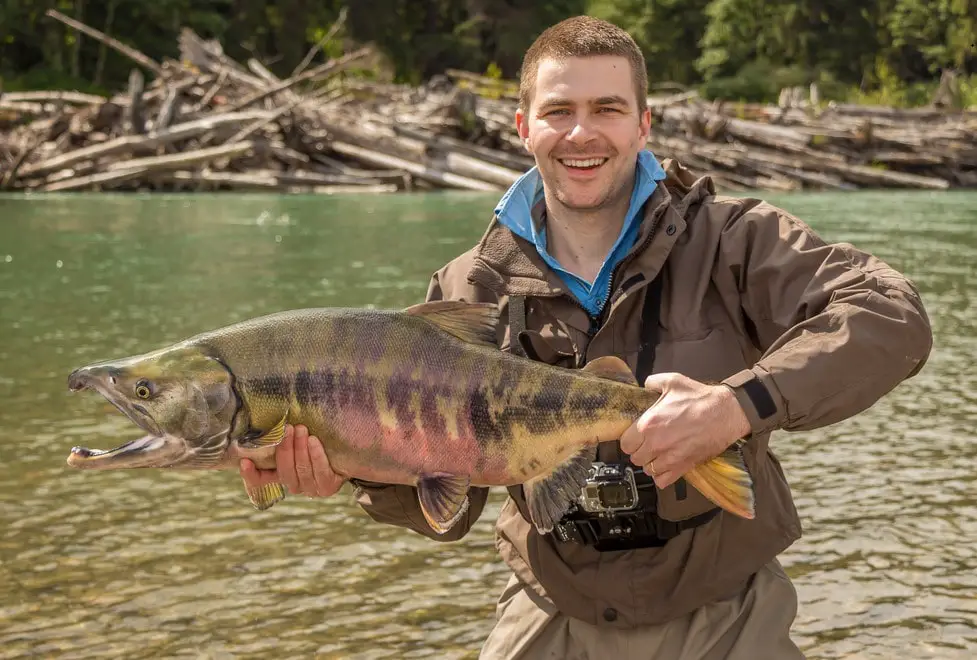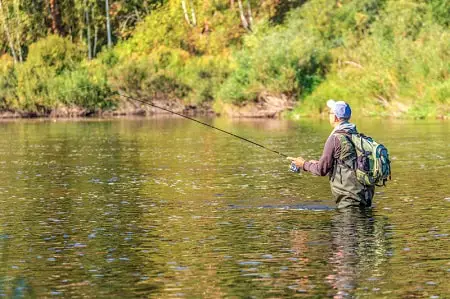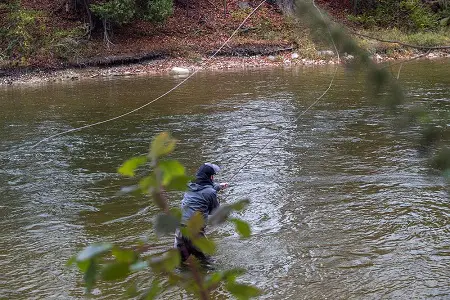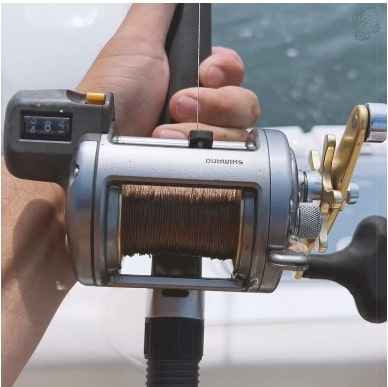Chum Salmon Fishing: Proven Methods, Baits, and Gear

Chum salmon fishing offers anglers the opportunity to hook and land dozens of salmon a day, and some anglers claim that pound-for-pound chums may be the hardest fighting salmon of all five species. Using the right methods, the right setup, the right baits and flies, and the right lures can dramatically increase the amount of chum salmon you catch.
In this article, I will discuss how to catch chum salmon using the tactics and tips that top guides use. I will discuss both river fishing and ocean fishing methods for catching chum salmon.
Understanding Chum Salmon
Chum salmon, also known as “dog Salmon”, “dogs” or “doggies” due to their canine-like teeth. Chums are widely distributed along the Pacific Northwest, stretching from Alaska down to central California.
Typically, an adult chum salmon weighs between 8 to 15 pounds and over 30 pounds.
River Fishing For Chum Salmon

The first step to knowing how to catch chum salmon is knowing when they enter the rivers.
When To Fish For Chum in Rivers
The timing of chum salmon runs varies by region. In most southern Pacific areas, the first chum salmon enter rivers in late August, but the prime fishing season usually runs from September to October.
In Alaska, some rivers witness chum salmon in early June, with peak runs occurring in August and September, extending to late October.
Where to Catch Chum Salmon in Rivers

Chum salmon can cover extensive distances within rivers, but unlike coho salmon, they tend to stay lower in the rivers.
- Fishing Chum In The Lower River: Anglers will do well trolling and boat fishing in the lower river. Shore and bank anglers, on the other hand, target deep edges and areas where chum salmon are funneled. Chum activity tends to peak during high tides. In smaller rivers, the lower sections may resemble trout streams, allowing for more conventional fishing methods.
- Chum Salmon Travel Routes: Chum salmon tend to be lazy and they prefer to work their way up rivers on the outside edges of fast water. Features such as seams and bubble lines often indicate the travel routes, just focus your fishing efforts on the slower side of these seams.
- Chum Salmon Holding Water: For the best chances of success, target holding water that is slower and is 3 to 7 feet deep. This includes deep pools, slow pockets, and spots below rapids. These areas offer slower, deeper water where chum salmon can conserve energy and are more inclined to bite.
River Fishing Methods
Numerous methods are effective for catching chum salmon in rivers:
- Fly Fishing: Fly fishing for chum salmon can be both effective and enjoyable. use streamer flies that mimic baitfish or nymphs resembling bugs or salmon eggs. Bushy Marabou flies in pink, purple, orange, and black are good bets.
- Float Fishing: The float fishing method involves presenting bait below a bobber or river float, and drifting the rig and bait with the current.
- Drift Fishing: Drift fishing methods allow me to effectively drift a bait down the river without the need for a float.
- Casting Lures: Fishing lures and plugs from the riverbank is an effective technique since the chums stay close to shore. Casting lures can cover a lot of water and are especially ideal for fishing in “frog water” where chums like to hold.
- Twitching Jigs: Twitching jigs for chums can yield excellent results when targeting river chum salmon. For many anglers, this is the most effective and fun method to catch chum.
- Plunking for Salmon: Plunking is a stationary fishing method where a heavy weight is used to anchor the bait or lure near the river’s bottom. The bait is up off the bottom and ready for a passing chum salmon.
- Side Drifting: With the side drift approach, I drift downriver in a boat while presenting my bait beside the boat. This method allows for long drifts and effective coverage of water.
- Back Trolling: Back trolling for salmon involves running multiple lures out of the back of a boat, while slowly drifting downriver towards the chum salmon.
- Shore Fishing For Chums: Anglers can fish the shorelines of rivers with any of the above methods.
River Fishing Gear

Chum salmon fight hard, so my gear needs to stand up to these scrappy salmon.
Here’s a breakdown of essential gear:
- Rods: Select a rod based on the chosen fishing method. Using an 8-foot fast-action rod is ideal for twitching jigs. Use an 8.5 to 9.5 foot rod for plugs, spinners, and spoons. Using an 11 to 14-foot float rod works best for float fishing. Back trolling benefits from a softer rod tip.
- Reels: Many anglers prefer spinning reels and spinning rods, although baitcasting reels work well for most methods and excel in boat fishing scenarios. I prefer to use a Centerpin reel for float fishing. Fly rods and reels also work when fly fishing for chum.
- Line: The choice of line depends on my fishing method. As a general guideline, a fourteen to twenty-pound line is suitable for chum salmon.
Best Lures and Baits for River Fishing
Successful river fishing for chum salmon often relies on the right lures and baits. Here are some proven options:
Best Fishing Lures:
- Spoons
- Spinners
- Plugs
- Twitching Jigs (in sizes from 2 to 4 inches)
- Assorted Colors – Chum salmon’s aggression makes them responsive to a variety of colors, including bright hues, dark shades, and black lures.
Best Baits:
- Chunks of Skein
- Salmon Eggs in a Sack (Roe Bag or Spawn Sac)
- Prawns
- Flies
- Worms
- Artificial Baits like Beads
Chum Salmon Fishing in the Ocean
Catching chum salmon in open water is overshadowed by the bigger Chinook salmon and the feisty coho salmon. The reasons are due to the Chum salmon being less tasty. But chum can be one of the hardest fighting salmon when caught in the Ocean.
Here are some options for those interested in catching chum salmon in the ocean:
Where to Catch Chum in the Ocean
- Summer Chum Fishing: Chum salmon can often be found far from the shore at times, but they are often found in the top 50 feet of the water column.
- Location: Chum salmon tend to congregate in tide rips, along structures, out from river mouths, or anywhere that bait congregate.
- Low Light: Keep in mind that, even on cloudy days and mornings, chum salmon may swim closer to the surface. I will troll, jig, or mooch different depths to figure out where they are holding.
- As summer progresses, chum salmon move closer to beaches and shorelines as they prepare to stage out from river mouths.
Best Methods for Ocean Fishing
- Trolling for Salmon: Trolling involves using small deep-diving lures, or divers to reach the desired depth for chum salmon. The recommended trolling speed typically falls between 1 and 2.5 mph.
- What to Troll With: Trolling with a dodger and hoochie, small mini squid (usually called Mini Sardines), or a spoon is a common practice among anglers. The key is to maintain a slow speed that gets the dodger wobbling. They like green, purple, and hot pink colors.
- Jigging or Mooching for Salmon: Jigging over the side of the boat is another effective method for chum salmon anglers. The best areas are often in the brackish saltwater off river mouths.
- Beach Fishing for Salmon: Anglers without access to a boat can take advantage of higher tides that push chum salmon closer to the shore and beaches. Casting lures or jigs is a popular choice among beach anglers. Drifting herring chunks under a float is also a good option.
Ocean Fishing Gear
When it comes to fishing in the ocean, having the right gear can make all the difference.
- Rods: Long trolling rods ranging from 9 to 11 feet are preferred. Select rods designed specifically for the chosen method, such as downrigger rods, dipsy rods, or trolling rods.
- Reels: Many anglers opt for line counter baitcasting reels which allow them to precisely control the lure’s depth, which can be crucial for success. I might need different line lengths depending on the fishing conditions.
- Line: Ocean anglers often use various types of lines, including monofilament, lead-core, copper, and braided lines. Common line strengths range from 40 to 65 pounds.
- Net and Release Gear: I always have a good salmon net with a wide hoop net with a long handle and a deep net bag ready and waiting. Additionally, carry gloves and long pliers for safe handling.
7 Guide Tips for Catching Chum Salmon
Maximize success with these expert tips:
- Rotate Colors: Experiment with different lure colors to match the fish’s preferences. Bright colors and silver often work well on cloudy days, while copper or gold shines on cloudy days.
- Rotate Baits: Figure out what they want but rotating baits. Try switching between straight-moving spinners and wobbling plugs or twitching jigs based on the day’s conditions.
- Rotate Sizes: Adapt to river conditions and chum salmon behavior by adjusting the size of the lure and bait. Larger options suit dirty water or low light, while smaller ones work in clear water or when salmon are holding.
- Cover Water Effectively: Ensure the lure reaches all areas of the fishing zone to increase the chances of hooking more fish.
- Fish the Right Water: Recognize that chum salmon occupy different types of water during their migration. Low, clear water often finds them in deeper pools and slower water, while early mornings and dusk see them moving through the head of pools, pocket water, and runs.
- Fish After High Water: In larger rivers, chum salmon may enter at any time due to strong currents and ample depth. However, smaller rivers often require significant rain to raise water levels before chum salmon enter.
- Watch the Surface: To locate chum salmon, watch for surface activity, such as jumping chum salmon.
Tight Lines!
Graham
